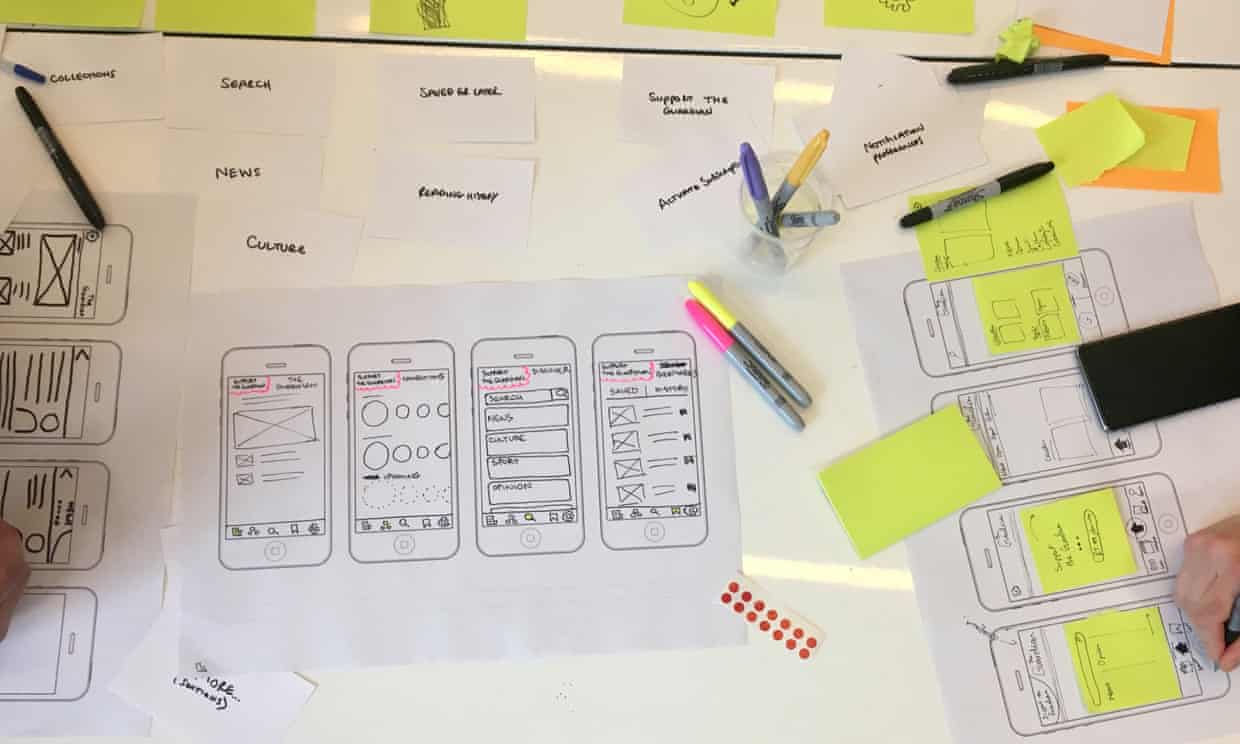The role of User Experience (UX) at the Guardian is to bring our journalism to the forefront, while ensuring a seamless news experience across platforms and devices. UX is at the heart of everything we do, we are devoted to taking a reader-centric approach to developing and designing experiences that inform, inspire, and engage. As researchers and designers for the Guardian, we have the luxury of speaking to passionate readers from all over the world.
For years, our readers - many of whom are loyal supporters have kept us going as an organisation, and we owe it to them to listen and learn as much as possible and build experiences they value. Whether that means bringing them into our UX lab to evaluate new app concepts, interviewing them remotely about their reading habits, or stopping Guardian readers in the streets for testing on the fly, we make sure to include people as early as we can in the design process.
We are a team of UX designers and researchers, but our work extends beyond the walls of the UX lab. We collaborate across various teams with visual designers, product managers, and engineers on a daily basis to ensure our decision-making process doesn’t happen in silos. While it would be easy to describe UX best practices at the Guardian and pretend that things go smoothly at all times, it’s important to highlight the unique challenges we face as UX-ers and how we try to remedy them when they arise.

Same goals, different ways
As UX-ers we are responsible for championing the voice of the reader, but sometimes this can mean being the bearer of bad news internally. Not all product designs are well received by readers, delivering this feedback to our teams can put us in a tricky position. However, when it comes down to it, product, UX, visual design and engineering all share the mutual goal of bringing the best experience possible to our readers, but there can be a difference of opinion in how that is achieved.
Similarly, there are many times when pushback comes directly from our readers. UX designers and researchers pride ourselves on being empathic to people. This can be extremely positive when readers are happy with our products, but on the other hand, when things are not working well because of usability issues or bugs, we feel their pain.
What works for us
The Guardian is an almost 200 year old organisation, in the last three years we have evolved our organisation to become more agile, working in collaborative sprints to achieve some pretty remarkable results across the business. We’ve found these communication techniques helpful when operating in a cross-functional team:
-
Be open to experimentation: when it comes to playing back research findings or showcasing new designs to the team, delivery format can be everything. Not everyone can always spare an hour to sit through long meetings, so be prepared to use Google Chat, bullet points and even a 5 minutes demo or stand up meeting to get your points across.
-
Focus on the big picture: it can be disappointing to receive negative reader feedback just like everyone, they can be resistant to change. It’s always good to step back from the situation to refrain from focusing on the negatives and remember the business strategy and the reason why decisions are made.
-
Empathise with internal decision makers: this can be challenging when working across multiple teams, but it’s helpful to chat with decision makers as often as you can. Some of the most important conversations and brainstorming moments can flow from having an unexpected chat with someone on the staircase, rather than a booked workshop session or meeting.
-
Be pragmatic: there are times when we make space for big thinking and ideation, but sometimes we need to meet tight deadlines to support the business strategy. When our cross-functional teams need to deliver products under pressure, we need to support them. Embracing the constraints and being realistic about what we can and cannot do can make the design process complex, but really exciting.
Conclusion
The Guardian is a great place to work as a UX-er, we have access to a lab full of amazing technology and a good level of autonomy to do our work and experiment with new design and research methods. We have supportive colleagues and teams of enthusiastic people who truly want to make a difference in the lives of our readers.
